Want to skyrocket your SEO without sifting through a lengthy blog about backlinks?
Here’s the juice: Focus on quality backlinks from trusted sources like Semrush, Ahrefs, Small SEO Tools, and Neil Patel’s platform.
These tools not only boost your rankings but save you time and effort in the SEO hustle.
First, lets get a few quick frequently asked questions out of the way
Never…Ever buy backlinks. We’ve been helping companies with SEO since the early 2000’s and know Google takes this very seriously.
We’ve seen many companies hit with the Google penalty. Even large websites like BMW.com
Dont jeapordise your web site with a penalty with no possibility of complete recovery. Learn how Google detects purchased backlinks
The number of backlinks you can build per month without risking a Google penalty is not a fixed number. Google’s algorithms are complex, and they don’t penalise websites based solely on the number of backlinks acquired in a given timeframe. Instead, Google focuses on the quality, relevance, and natural growth of your backlink profile. Here are some factors to consider:
- Quality Over Quantity: It’s better to have a few high-quality backlinks from reputable websites than a large number of low-quality or spammy backlinks. High-quality backlinks are those from authoritative, relevant websites in your niche.
- Natural Growth: A sudden spike in backlinks can be a red flag to Google, especially if the links are of low quality. It’s essential to grow your backlink profile at a steady, organic pace.
- Diverse Link Profile: Ensure that your backlinks come from a variety of sources, including blogs, news websites, forums, and more. This diversity can make your backlink profile appear more natural.
- Avoid Paid Links: Google discourages buying backlinks. If you’re caught purchasing links, your website could be penalized.
- Relevance: Backlinks from websites in your industry or niche are more valuable than those from unrelated sites. Google considers the relevance of the linking site when evaluating the quality of a backlink.
- Anchor Text: Over-optimizing anchor text (the clickable text in a hyperlink) can be a red flag. It’s essential to have a mix of branded, generic, and keyword-rich anchor text.
- Monitor Your Backlinks: Regularly monitor your backlink profile using tools like Google Search Console, Ahrefs, or SEMrush. This will help you identify and disavow any spammy or low-quality links that could harm your site’s reputation.
There isn’t a specific number of backlinks you can safely build per month. Instead, focus on building high-quality, relevant backlinks organically over time. If you’re ever in doubt, always prioritize quality over quantity.
Google’s algorithms are sophisticated, and there isn’t a specific number of links that will trigger a penalty for buying backlinks. Instead, Google looks for patterns and behaviors that suggest unnatural link-building practices. Here are some factors that might raise suspicions:
Sudden Spike in Backlinks: A sudden and significant increase in the number of backlinks pointing to your site, especially from low-quality or unrelated websites, can be a red flag.
Low-Quality Linking Domains: If a majority of your new backlinks come from spammy, low-quality, or unrelated websites, it can signal to Google that the links might have been purchased.
Site-wide Links: Links that appear on every page of a website, especially in the footer or sidebar, can be seen as unnatural.
Over-Optimized Anchor Text: If most of your new backlinks use the same keyword-rich anchor text, it can look suspicious. Natural backlink profiles usually have a mix of branded, generic, and varied keyword anchor texts.
Links from Irrelevant Websites: Backlinks from websites that have no relevance to your niche or industry can be a sign of purchased links.
Links from Link Farms: These are websites created solely for the purpose of linking out. Google can usually identify these sites and may devalue or penalize links from them.
Transactional Link Patterns: If there’s a clear pattern of you linking back to sites that link to you (reciprocal linking) or other transactional behaviors, it can raise suspicions.
Public Link Selling Networks: If you obtain links from well-known public link networks or directories that sell links, you’re at a higher risk of being penalized.
Remember, it’s not just about the number of links but the overall behavior and pattern of your link acquisition. Even a few purchased links, if they are obvious and blatant, can lead to penalties. On the other hand, a larger number of links acquired naturally and over time from reputable sources is less likely to raise suspicions.
Always prioritize organic, white-hat SEO strategies over quick fixes or schemes that might jeopardize your site’s standing in search engine rankings.
The definition of a “sudden spike” in backlinks is relative and can vary based on the existing backlink profile of a website and its history. Google’s algorithms are designed to detect unnatural patterns, and what might be considered a spike for one website might not be for another. Here are some general considerations:
Existing Backlink Profile: If a website has been consistently gaining 5-10 backlinks per month for several months and then suddenly gains 500 in a week, that would be considered a significant spike. On the other hand, a well-established website that regularly gains hundreds of backlinks per month might not raise alarms with a similar increase.
Reason for the Spike: There are legitimate reasons for a sudden increase in backlinks. For example, if your content goes viral, gets featured in a major publication, or is cited by a popular influencer, a spike in backlinks is expected. Google’s algorithms can often differentiate between these organic spikes and unnatural ones.
Quality of New Backlinks: A sudden influx of low-quality, spammy, or irrelevant backlinks is more likely to be flagged as suspicious compared to a spike in high-quality, relevant backlinks from authoritative sources.
Duration of the Spike: If the spike is short-lived and followed by a return to the usual backlink acquisition rate, it might be seen as less suspicious than a prolonged and sustained increase in backlinks without a clear reason.
Historical Patterns: Google considers the historical backlink acquisition patterns of a website. If a site has a history of experiencing occasional spikes in backlinks due to legitimate reasons, a new spike might be seen as less suspicious.
While it’s challenging to provide a specific number that constitutes a “sudden spike,” it’s essential to monitor your backlink profile regularly and be aware of any significant changes. If you notice a sudden increase in backlinks, investigate the sources and reasons. If the spike is due to unnatural or manipulative practices, it’s a good idea to address the issue proactively, either by removing the links or using the disavow tool in Google Search Console.
By now, most business owners know the importance of ranking high in the search engines and the process of SEO (search engine optimisation) to gain those ranks.
There are over 1000 signals google looks at when ranking websites on the Google search engine.
These are categorised into 2 groups, on-page and off-page SEO. On-page is the stuff you do on your site and off page SEO is all the stuff you do off your site.
Back links falls under this second category, off-site optimisation.
Google places great importance on the number of and quality of back links to your website.
Google recognises this as one website vouching for another.
Further, the quality of a link is determined by the context and topic of the source webpage…if it’s a similar topic that a website that has a link pointing to one of your web pages your laughing that’s a great plus.
Linking allows Google to give extra points to both websites for the context that’s being discussed, and in turn increases ranking for both websites for the keywords that are included on the page and the anchor text in the link.
So vouching for other websites is also a positive thing to do in terms of search engine ranking.
However, Google recognises the destination website is of higher value since it’s vouched for by the source website.
SEO (Search Engine Optimisation) back links make a huge difference in the way Google decides on search engine ranking. These links should be of quality in terms of the source and destination page, and also be natural.
Are back Links important for SEO?
Most SEO experts believe so and that back links play a major role in gaining higher google search engine rankings.
Small company websites will improve ranking by obtaining high quality back links from relevant sites with topics and content that are similar in context.
To improve your website Google ranking where you would receive a boost in organic traffic you must have quality back-links which include:
- Relevant anchor link text to your website
- Relevant contextual content on both the source and destination website
- Position of links on the actual page, the higher the better
These are key metrics that Google uses to adjust website rankings.
If your links are low quality and are interpreted as spam, Google will mark your website as untrustworthy and therefore downgrade it in the search results.
It’s called the Google penalty.
Here’s our list of the top 20 websites that can help you get quality back-links from.
Just don’t overdo it build natural links over time.

Ahrefs.com
This website has both a free and paid back link checker and contain a database of 15 trillion back links in their systems. They include the following:
- Content Index
- Keyword index
- Search traffic index
- Back link index
Ahrefs provide organic search reports which allow you to see the exact keywords for which your competitors rank in organic search.
Also at the same time it provides the amount of traffic driven by each of them.
The use of the Top Pages report allows you to see which pages send the most traffic to their sites. The Content Gap feature uncovers keywords they rank for but you don’t.
Ahrefs achieves possibly the best coverage which consists of data for 150 million keywords in the United States alone and even more for over 150 other countries.
Enter your website in domain/URL search bar.

https://ahrefs.com/backlink-checker
Small SEO Tools:
This website is a free back link checker which allows you to easily monitor back links for a particular domain.
By using this tool you’re able to:
- Discover and track where your back links are coming from
- Research your best performing content
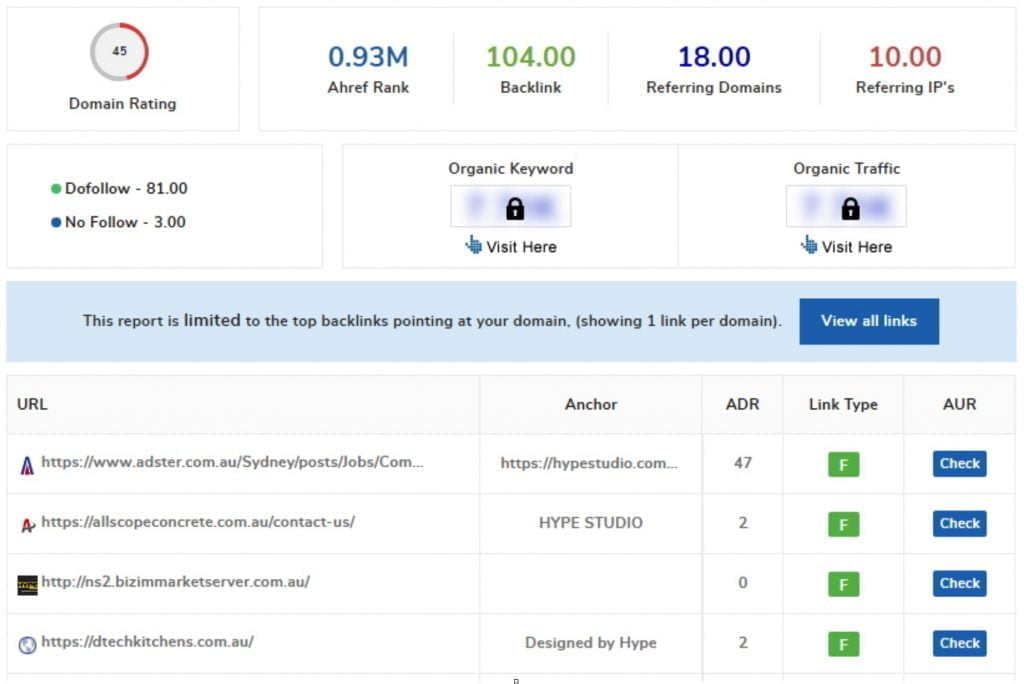
https://smallseotools.com/backlink-checker/
Neil Patel
Another awesome free website from Digital marketing guru Neil Patel to check back link profiles. With its free checker your able to acquire the following information:
- Domain overview
- Top SEO pages
- Keywords Suggestions
- Content Ides

Just Enter your competitors domain in search bar and away you go
https://neilpatel.com/backlinks/
SEO review tool
This is also one of the best websites for back link profile checking and gives information about:
- How to use back link checker
- How to improve your back link profile
- What are back links
- Back link report filters
https://www.seoreviewtools.com/valuable-backlinks-checker/
SEO review tool website traffic checker is a Bulk Website Traffic Estimator. Enter the URL of yours or any website and find out how many people visit this site every month. In addition, the Website Traffic Checker shows you how many pages an average user views and how many people will leave the site after just viewing a single page (bounce rate).
Monitor Back Links:
Monitor back-links is a free back link SEO tool and provide information about What back links are, why are they important, how to use SEO tool and What to do with the information about your website. To use the Free Back-link Checker Tool, simply input the URL of your domain
(or any other domain) for your back link analysis.
You will discover:
- The best back links pointing towards your website
- The total number of back links pointing towards your website
- The total number of unique referring domains that are linking to your website
- Your website’s overall Trust Flow and Citation Flow scores
And you will see the following data for each back link:
- Trust Flow and Citation Flow of the linking website
- Back link status (follow or nofollow)
- URL of the page where the back link is placed
- URL of the page on your website where the back link is pointing
- Anchor text in which your back link is embedded
Check it out: https://monitorbacklinks.com/seo-tools/backlink-checker
Site Checker
This is a free website to check free back links profile which also clearly explains, important back links, link checker, Key steps for working with and Tracking natural back links.
According to Brian Dean in one of his posts, back links are still of great importance. The more competitive a search query is, the greater the importance links have compared to other factors.
https://sitechecker.pro/backlinks-checker/
The Hoth
The Hoth, unique name, free website back links checker.

https://www.thehoth.com/backlinks-checker/
Link Miner
This website has a very powerful SEO tool for high quality back links. Key features include:
- Mine the most powerful back links of competitors
- See the link placement in the web site preview
- Focus on specific types of back links
- Save the best finds into a list

Sem Rush
The Semrush site, a very powerful SEO tool for back link profile checking and provider of helpful explanation about;
- Conducting a deep link analysis
- domains authority
- Checking back link types
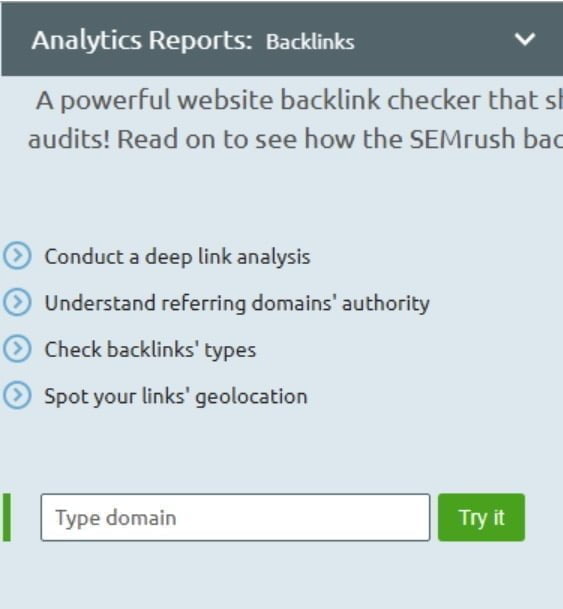
https://www.semrush.com/features/backlinks/
MOZ
This website provides a powerful high quality back link profile and teaches you about:
- The Beginners Guide to Link Building
- Do I really want a link from that site
- Links and Link Building
MOZ believe there is a better way to do marketing. A more valuable, less invasive way where customers are earned rather than bought. Moz is passionate about it, and have a mission to help people achieve it. Their main area of focus is search engine optimisation (SEO).

https://analytics.moz.com/pro/link-explorer/home
Linkydy.com
Linked website that checks and provides linked profiles for its users and provides information about:
- How to analyse your back link profile
- What is this tool
- What are back links
- How to use back link checkers
- What do the metric mean
- Search Engine Optimisation

https://www.linkody.com/en/seo-tools/free-backlink-checker
Dupli Checker
The Dupli checker website helps you check your back link profiles and prevents Link based penalties.
- Low quality referring domains
- Risking your website reputation
- Link based penalties
- De-indexing of Website
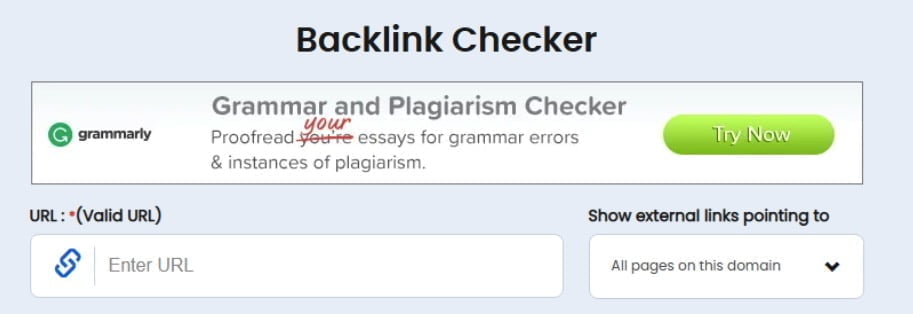
https://www.duplichecker.com/back-link-checker.php
Webmeup
Another awesome resource, for those who want to acquire accurate back links. The checker provides plenty of information on all sorts of detail. Key features;
- Impactful SEO tasks with the Webmeup tool
- The best price in the industry
- Only unique links with SEO impact
Webmeup has a unique methodology which reveals HUGE numbers of links to those who really need them. Not Amazon or EBay or other giants who are already in top 10 for thousands of search terms. There index is created for owners of smaller sites who really need SEO for growing their business. This is how Webmeup differ from other back link provider.
Cognitve SEO
Key features:
- Historical back link Research
- Actionable SEO data at your finger tips
- SERP Ranking analysis
- Site Audit
- The cognitiveSEO toolset is a complete digital marketing solution.
- provides recommendations on how to fix them
- very fast response time
- all-inclusive tool covers all the needs of an SEO Pro
- efficient solutions on how to increase any website’s traffic
- flags possible SEO issues
- social visibility and much more.
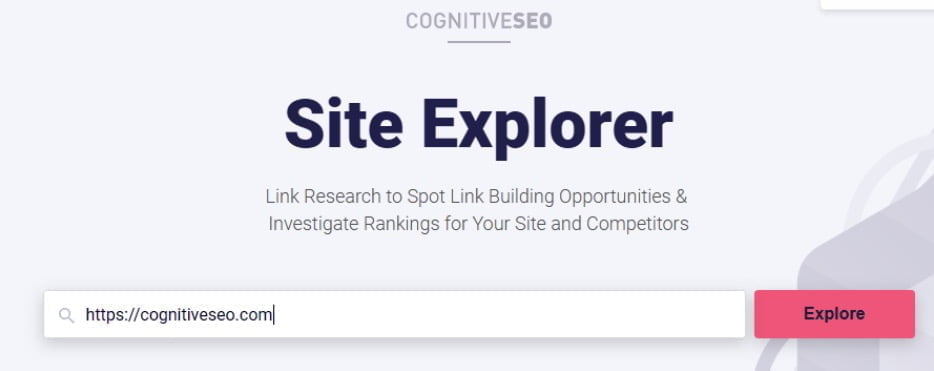
Clever Start
Clever start key features include:
- back link checker
- Domain Rank.
- credibility with toxic links checker
- Trust Rank
- Link Rank
- tool to see how many pages and domains link to your website
- Type your domain name above and away you go
check out http://cleverstat.com/backlink-checker
SE ranking
This Website is a paid Back link profile checker, we wanted to include as its also quite popular.
https://seranking.com/backlink-checker.html
Search engine reports
Websites are involved in a constant battle to get a good ranking and to maintain it on search engines. Search engine reports helps you win that battle.
Key features:
- How valuable are your inbound links
- Importance of back link checker
- Why are back links important
- Importance of back links in google
- Do back links factor in Google ranking
- Back link checker tools
https://searchenginereports.net/backlink-checker
Rank Watch
This is a free website Rank Watch link profile provider:
- Importance of performing a Back link watch on your website
- The Need of Back link checker tool
- How to check SEO Back links
https://www.rankwatch.com/backlinks/
Rank Z
The free Rank Z website tool is a great SEO optimiser system. some of its key features include the Domain and page level back links Metrics.
- Bird’s Eye View of Competitor Domain Back Links
- Why Choose free back link checkers
https://rankz.io/tools/backlink-checker
Moon Search
Moonsearch is an SEO reporting tool which can analyse over 500 million websites in 23 million domains. A great resource for those looking for more in-depth info.
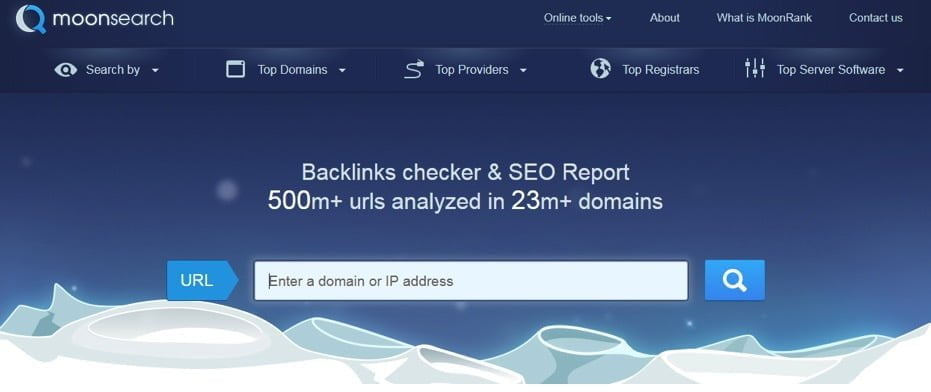
Google Link Spam Policy
Google uses links as an essential factor in determining the relevancy of web pages. Any links intended to manipulate rankings in Google Search results may be considered link spam. This includes any behaviour that manipulates links to your site or outgoing links from your site. The following are examples of link spam:
Buying or selling links for ranking purposes. This includes:
Exchanging money for links, or posts that contain links.
- Exchanging goods or services for links.
- Sending someone a product in exchange for them writing about it and including a link.
- Excessive link exchanges (“Link to me and I’ll link to you”) or partner pages exclusively for the sake of cross-linking.
- Using automated programs or services to create links to your site.
- Requiring a link as part of a Terms of Service, contract, or similar arrangement without allowing a third-party content owner the choice of qualifying the outbound link.
- Text advertisements or text links that don’t block ranking credit.
Google does understand that buying and selling links is a normal part of the economy of the web for advertising and sponsorship purposes. However, it’s not a violation of their policies to have such links as long as they are qualified with a `rel=”nofollow”` or `rel=”sponsored”` attribute value to the `` tag.
You can find this information in Google’s official documentation on link Spam Policies for Google Web Search]



